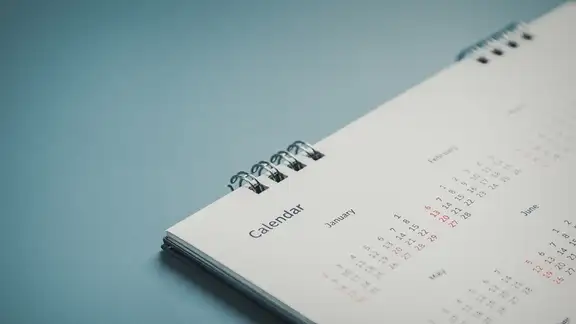Your go-to guide for income taxes in Canada for students.
November 30, 2023

How the CRA collects income tax
What if you didn’t earn any money this year?
What documentation do you need to file your taxes?
Filing your taxes for the first time shouldn’t feel like a pop quiz. We’ve prepared a crash course on income taxes in Canada, so you can survive and thrive as a first-time filer, or when you file as a student.
What is income tax?
Income taxes are a percentage of a person’s earnings (the money they make from things like their jobs, or money their investments are making while in the bank) that are owed to the provincial and federal governments to help pay for things like roadways, hospitals, the healthcare system, and other social services provided by the government.
How do you know how much tax you owe on your income?
Grab your calculator. The percentage you owe increases with the amount you earn. This is known as a graduated or progressive tax system. Essentially, if you earn more, you pay higher taxes. However, no one in Canada is taxed federally on their first $15,000 (in 2023) earned for the year. This is called the basic personal amount.
Income tax is paid to the Canadian Revenue Agency, also known as the CRA. In Quebec, the agency is called Revenu Québec.
How the CRA collects income tax.
To get a job in Canada, you must have a Social Insurance Number (SIN), which is tied to your identity in the country.
If you’re working at a coffee shop, for example, you’ll likely get a paycheque every two weeks reflective of the money you earned during the hours you worked in that pay period.
If you worked 20 hours over two weeks, at $16.55 per hour, you would have earned $331. However, you’ll see on your paycheque that there are tax deductions. Your employer will hold back some of your earnings to pay your taxes for you, rather than you having to remember to set a certain amount aside and send it to the CRA yourself.
Your employer then sends details of your annual year’s income to the CRA and to you, on a form called a T4. This has all the info you’ll need to file your taxes, and when it comes to earnings from your job, you’ll see the amount you made as well as the amount they’ve taken off for taxes already. Once you’ve got that form, you’ll need any other forms that show money you earned (there’s a list below, an example would be if you have a savings account, the bank will send you a form on earnings).
From there, you’ll be ready to start the filing process with the CRA. You’ll input all your earnings, and confirm or update the info they have in order to determine what credits and benefits you’re entitled to. Lastly, you can see if your employer withheld enough tax or if you owe more.
Most of the time, your employer deducts the right amount of money from your paycheque for you so that you won’t have pay anything during tax time. Sometimes, not enough was deducted or too much was deducted. This might mean you’ll owe taxes (womp), or you’ll get a tax refund (yay!)
If you’re self-employed, like if you have an Etsy shop, you should be saving a percentage of your earnings for your annual income taxes. You can base it on a rough estimate of what you’ll earn and owe, since there’s no employer deducting the taxes.
Check out our tax calculators to help you determine what you might owe.
What if you didn’t earn any money this year?
You should still file a tax return every year even if you didn’t earn any income, because there are credits and benefits that you may be able to access only through filing a tax return. Students can get the GST/HST credit – a tax-free quarterly payment that helps those with lower income.
When you buy things in Canada, you pay GST or HST on those items, so this is basically a rebate of some of the GST/HST you’ve paid. It could mean up to several hundred dollars coming back to you.
How to file your taxes.
First thing’s first, you need to gather all your necessary documents like:
- Your social insurance information
- Your income slips (T4 from your employer is the most common)
- Any other record of income, which might be more complicated or a higher volume of documents if you’re self-employed
- Investment details such as RRSP contributions (it’s never too early to start saving!)
- Any other receipts you have that qualify for tax deduction, such as medical expenses not covered by insurance, charitable donation receipts, or deductions related to your business (such as supplies for your Etsy store products).
The Canadian tax deadline is April 30th, though if the deadline falls on a weekend, the deadline is extended to the next business day. For people who are self-employed, the tax deadline is June 15th, but if they owe taxes, they're supposed to pay them by April 30th.
What happens if I owe?
If you owe the CRA money, you’re meant to pay them in a one-time payment on or by April 30th, but you can work with the CRA directly if you need to figure out a payment plan. If you file late, you’ll be charged a penalty equivalent to 5% of what you owe, plus an additional 1% fee each month you’re late, for up to 12 months.
You can file and pay your taxes through My Account (the CRA’s online portal, details below), or by phone or mail. You can also use a tax preparer such as H&R Block to file on your behalf, we’ll make sure you’ve done everything correctly so you’ll get the biggest refund you’re entitled to.
We find most Canadians who file taxes with us either get a refund or don’t owe any additional money. So, don’t worry about owing, but do file your taxes on time!
What’s a CRA My Account?
This is the online portal for the CRA. Though you don’t have to file through this portal, it’s good to have an account set up so you can check on the status of your taxes and benefits easily, or see if you have any uncashed cheques!
You can register here. You’ll l need your SIN, postal code, date of birth, and tax information from your latest tax filing. You’ll be mailed a code from the CRA to sign in, and from there you’ll create a password and have quick access your information. H&R Block can help get this set up for you as well.
What documents do you need to file your taxes?
Many of these might not apply to you yet, but there are documents you might collect in the coming years that apply to your taxes. Here are some:
Slips
- T4 slips (Employment income)
- Employment insurance benefits (T4A or T4E)
- RC210 Canada Workers Benefit advance payments
- T2202 Tuition and Enrollment Certificate
- Social assistance payments (T5007)
- Workers’ compensation benefits (T5007)
- Interest, dividends, mutual funds (T3, T5, T5008)
- All other information slips
Other documentation
- Notice of Assessment/Reassessment
- Canada Revenue Agency correspondence
- Sale or deemed sale of stocks, bonds or real estate
- Northern residents deductions receipts
- Rental income and expense receipts
- Disability Tax Credit Certificate
- Declaration of Conditions of Employment (T2200)
- Volunteer Firefighters certification
- Search and Rescue volunteers certification
- Written certification for eligible educator school supplies
Receipts
- RRSP contribution receipts
- Professional or union dues
- Tool expenses (for Tradespersons & apprentice mechanics)
- Other employment expenses
- Medical expenses
- Charitable donations
- Interest paid on student loans
- Exams for professional certification
- Digital news subscription
Key Dates
We’ve gathered up the most important tax dates and deadlines to help prepare you for tax season.
January
- It’s time to check on your CRA My Account or create one if you haven’t already. This way, you have lots of time to ensure your information is up to date in the system. It takes a few days to get your account verification code, so this leaves you plenty of time before the busy tax season really kicks off.
February
- The CRA and Revenue Québec will open NETFILE and ReFILE services for the tax year near the mid-end of February. This means, you’ll be able to file your tax return online starting mid-end of February.
- You likely won’t receive your T-slips from your employer or from other income right at this time, but you’ll receive them shortly after!
March
- The RRSP contribution deadline is March 1st. If you filed a tax return last year, and contributed to an RRSP last year, check your previous years’ Notice of Assessment to determine if you have additional room in your RRSP to make any last-minute contributions to your RRSP.
- March is a great time to file your taxes so you can get your refund as quickly as possible or have time to make a gameplan on how you’ll pay back any taxes owed.
April
- April 30th is the day that taxes are due, and any taxes owing balance is due, but you don’t need to wait until this day to file your taxes. The sooner you file, the sooner you receive your refund!
June
- June 15th is the tax filing deadline for those who are self-employed.
- It’s important to remember that any taxes owing are due on April 30th, so this filing date is only recommended if you’re certain you don’t owe taxes.
Now you’re ready to ace your taxes. If you have any questions about when and how to file, H&R Block Tax Experts are here to help. Find an office near you to book an appointment today.



